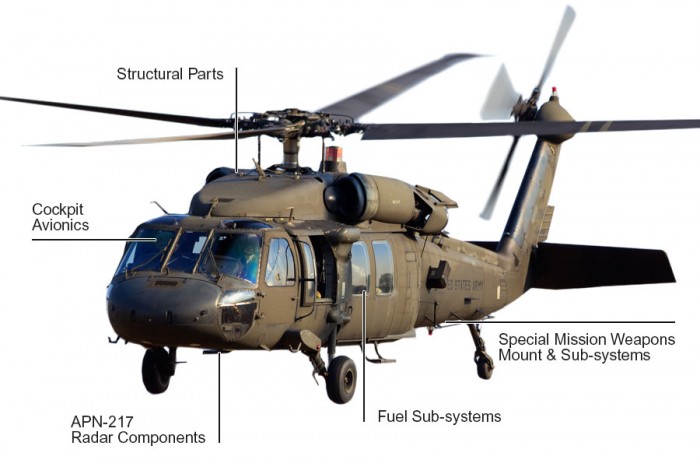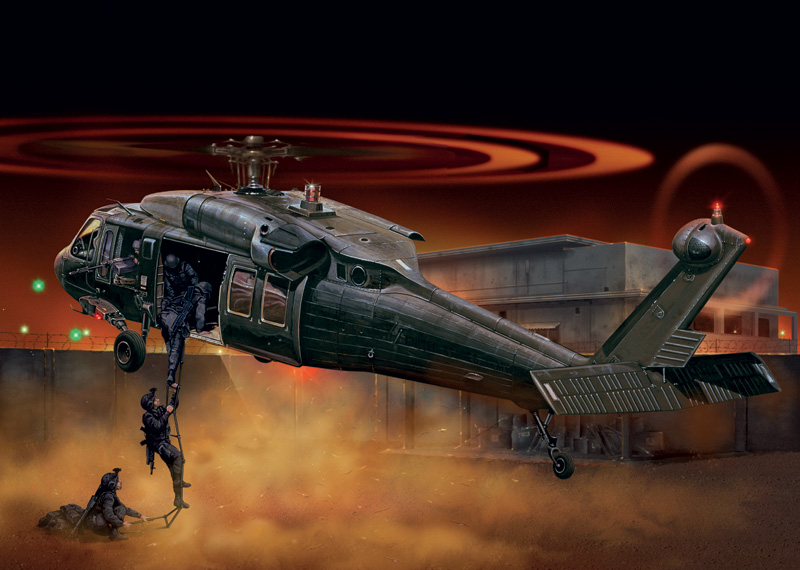Just How the UH-60 Blackhawk Revolutionized Military Aviation
Just How the UH-60 Blackhawk Revolutionized Military Aviation
Blog Article
Comprehensive Summary of the UH-60 Blackhawk Helicopter
The UH-60 Blackhawk helicopter, a hallmark of modern-day military aeronautics, has played an essential duty in diverse operational cinemas because its intro in the 1980s. With its robust layout and flexibility, it has actually adapted to accomplish different goals, from troop transportation to medical discharge. As we explore its complex history, style specifications, and technological developments, it becomes evident that the Blackhawk's influence extends much past the field of battle. The complete extent of its tradition and the lessons found out from its deployment across the world warrant a more detailed evaluation.
History and Advancement
The UH-60 Blackhawk helicopter has actually continually been a keystone of united state army aviation because its introduction in the late 1970s. Established by Sikorsky Aircraft, the Blackhawk was developed to satisfy the Army's demand for a flexible utility helicopter that might perform a series of missions in various environments. UH-60 Blackhawk. The development procedure started in 1972, with the initial model flying in 1974
Its functional debut came throughout the 1980s, where it was rapidly acknowledged for its rate, capability, and agility to deliver troops and cargo efficiently. The Blackhawk's performance in the 1983 Grenada intrusion and subsequent procedures strengthened its track record as a dependable workhorse for the U.S. Military. Over the years, the helicopter has undertaken various upgrades and variations, adapting to evolving armed forces demands, including the enhancement of innovative avionics and tool systems.

The Blackhawk's style has also evolved to serve numerous branches of the military and allied forces, showcasing its flexibility. Today, it continues to be an indispensable component of united state armed forces operations and remains to be a favored choice for rotary-wing aeronautics around the world, mirroring its enduring heritage and continuous importance in modern-day warfare.
Design and Specifications
Engineered for efficiency and versatility, the UH-60 Blackhawk helicopter features a durable design that improves its functional capabilities. The airframe is built largely from aluminum alloys, supplying a balance of toughness and weight efficiency. With a length of 64 feet and a blades size of 53 feet, the Blackhawk is designed to fit a vast array of missions. Its optimum takeoff weight is around 22,000 extra pounds, enabling it to carry considerable hauls.
The helicopter is powered by 2 General Electric T700-GE-701C engines, each providing 1,800 shaft horsepower, which makes certain high levels of integrity and performance in diverse atmospheres. The blades system is a four-blade, totally articulated design that permits outstanding maneuverability and stability, even in damaging conditions.
In Addition, the UH-60 includes innovative avionics and trip control systems that boost situational recognition and pilot control. The cabin is made for fast reconfiguration, enabling it to support numerous goal accounts, from army transport to medical evacuation. Overall, the design and requirements of the UH-60 Blackhawk show a commitment to operational excellence and adaptability in the area.

Missions and duties
With its robust layout and advanced abilities, the UH-60 Blackhawk helicopter offers a wide range of duties across different army operations. Initially established for army transport, the Blackhawk has advanced to carry out a large array of objectives, consisting of clinical evacuation, search and rescue, and logistical assistance. Its flexibility try this out permits it to run in diverse atmospheres, from city landscapes to rugged terrains.
In battle circumstances, the Blackhawk is crucial for placing and removing special operations forces, offering them with the wheelchair required to execute their missions efficiently. Furthermore, the helicopter can be furnished with advanced communication and avionics systems, boosting its duty as a command and control system in dynamic battle situations.

Technical Advancements
Incorporating innovative technologies has actually significantly improved the efficiency and capabilities of the UH-60 Blackhawk helicopter. The unification of advanced avionics systems, including electronic flight control and improved situational recognition displays, has actually improved pilot navigation and decision-making in intricate environments. These systems allow real-time information processing, helping with far better communication and control during objectives.
Additionally, the Blackhawk's airframe has actually undergone considerable upgrades, making use of composite products that reduce weight while enhancing architectural honesty. This modification adds to improved gas efficiency and operational array. The helicopter is additionally geared up with sophisticated propulsion systems that supply greater power and reliability, ensuring ideal efficiency in varied problems.
Additionally, the integration of modern sensors and weapon systems has actually expanded the Blackhawk's flexibility. Improved targeting capabilities and advanced threat discovery systems permit reliable interaction in battle scenarios, increasing mission success prices.
Global Impact and Legacy
The UH-60 Blackhawk helicopter has actually made an extensive effect on military procedures and humanitarian efforts worldwide given that its introduction in the late 1970s. Its convenience and progressed innovation have allowed it to offer in various roles, consisting of troop transportation, clinical evacuation, and logistical assistance (UH-60 Blackhawk). The helicopter's performance in fight circumstances has redefined airborne flexibility, enabling forces to react rapidly and efficiently to vibrant battleground problems
Globally, the Blackhawk has actually been deployed in countless disputes, from the Persian Gulf to the Balkans, showcasing its adaptability to diverse environments. Its function in humanitarian missions, such as catastrophe relief and search-and-rescue operations, has further solidified its reputation as a reliable possession in situation circumstances.
The heritage of the UH-60 extends past its army applications; it has additionally influenced helicopter style and operational teaching worldwide. Its success has actually triggered various other countries to develop comparable airplane, enhancing worldwide aeronautics standards and operational abilities. As the Blackhawk remains to develop with modern-day upgrades, its effect on both armed forces and private air travel continues to be significant, ensuring its location in background as one of one of the most find more legendary helicopters of its time.
Conclusion
The UH-60 Blackhawk helicopter stands as a testament to ingenious design and functional army application. Its layout and capacities have considerably shaped contemporary airborne procedures, boosting army mobility and operational effectiveness. The recurring innovations in modern technology continue to solidify the Blackhawk's role in contemporary warfare and humanitarian efforts. Therefore, the Blackhawk has left an enduring mark on military aeronautics, influencing future helicopter designs and redefining tactical methods across the globe.
The UH-60 Blackhawk helicopter, a trademark of modern-day military aviation, has actually played an essential role in diverse operational cinemas given that its intro in the 1980s - UH-60 Blackhawk.The UH-60 Blackhawk helicopter has constantly been a foundation of U.S. army air travel considering that its introduction in the late 1970s.Engineered for performance and versatility, the UH-60 Blackhawk helicopter includes a robust design that boosts its functional abilities.With its robust layout and progressed abilities, the UH-60 Blackhawk helicopter serves a plethora of functions across numerous armed forces operations.The UH-60 Blackhawk helicopter has actually made a profound influence on armed forces operations and humanitarian efforts worldwide since its intro in the late 1970s
Report this page